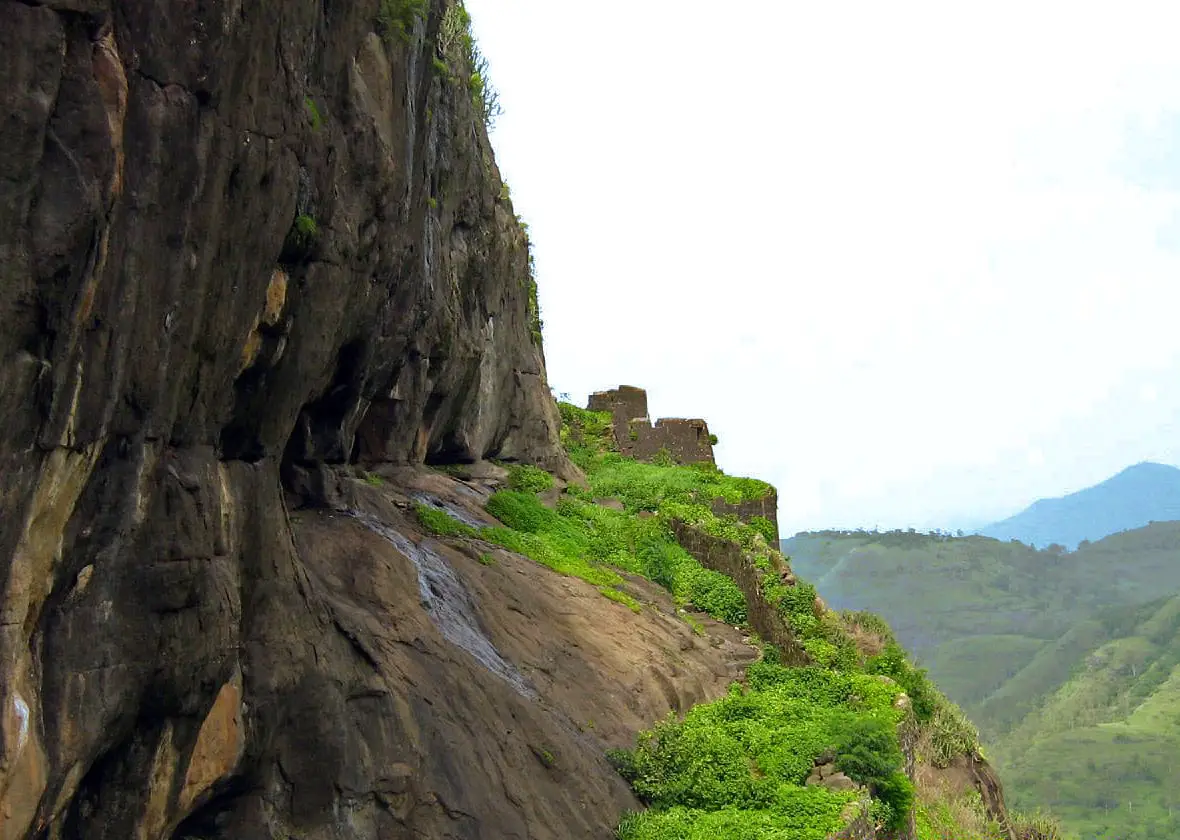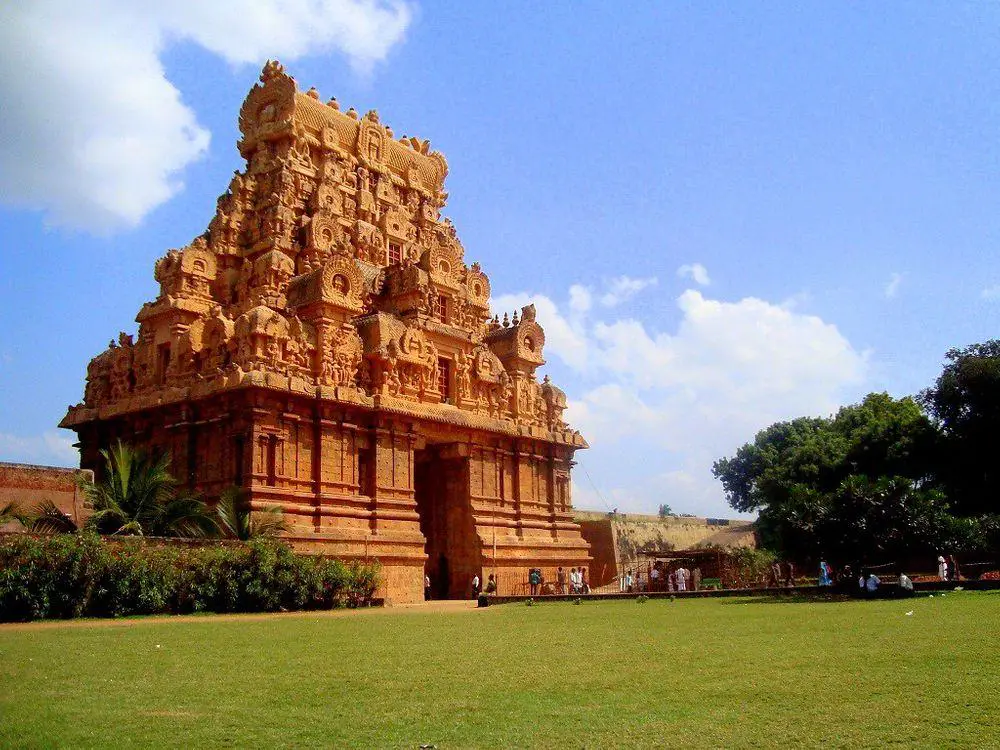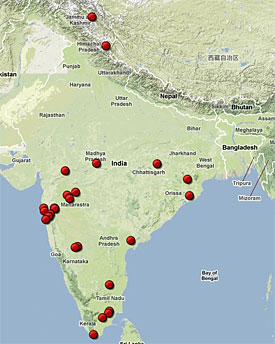World 🢖 Asia 🢖 India 🢖 Maharashtra
Buddhist shrines 🢔 Religious architecture 🢔 Archaeological wonders 🢔 Categories of wonders
Wonder
Shivneri Caves, Junnar

 In short
In short
Area around Junnar contains more than 200 ancient rock-cut temples. Main four groups of these temples are Shivneri Caves to the south-west, Manmod Caves to the south-east, Tulja Lena to the west and Lenyadri Caves to the north.
 71.7%
71.7%
GPS coordinates
Location, address
Alternate names
Age
Religion
Map of the site
If you see this after your page is loaded completely, leafletJS files are missing.
 In detail
In detail
Temples of Shivneri hill
In the 1st century AD, Junnar was an important trade center as it was located on a trade route leading from Satavahana capital Paithan to the rich ports at the Arabian Sea. The route was busy transporting carnelian and textiles to the Middle East and Roman Empire, path was often traveled also by ancient Greek and Middle East traders.
Shivneri caves are 50 rock-cut Buddhist monasteries of the Hinayana school, created some 2000 years ago, in the 1st – 3rd century AD. For the most part these caves are not very interesting, although some contain traces of paintings.
Four compact groups are formed by caves. Two groups are hewn in the eastern wall of the hill and are facing Junnar. One group is hewn in the southern wall and one on the western wall, facing Nana valley.
Caves are counted from the southwestern part of the hill, going around the hill counterclockwise – if looking from above.
First group
These 12 caves are located somewhat lower, in the southern side of hill.
- Cave 1 – vihara, consists of cell and verandah. Several cisterns in front of cave.
- Cave 2 – chapel with verandah and main hall which houses a shrine. Verandah initially had two pillars and two pilasters.
- Cave 3 – small vihara, consists of forepart and small cell.
- Cave 4 – vihara with forepart and two cells, collapsing. Contains inscription left by donor.
- Cave 5 – small vihara, consists of forepart and cell. Verandah contains remnants of a much later figure of Ganesh.
- Cave 6 – unfinished, partly filled with soil. Possibly used for keeping cattle.
- Cave 7 – cell with small forepart.
- Cave 8 – large hall with a forepart. Seems that this cave was neither a dwelling or shrine.
- Cave 9 – small vihara, consists of small forepart and cell.
- Cave 10 – vihara, consists of forepart and three cells. Middle cell collapsed.
- Cave 11 – small dwelling, cell with forepart. Several cisterns nearby, some have good water. Beautiful view on surroundings.
- Cave 12 – cell with an open front.
Second group
Consists of 25 caves, located on the upper scarp of the south-eastern corner of Shivneri Hill. The last 12 caves form a smaller subgroup called Bara Gadad – Twelve Caves.
- Cave 13 – hard to reach. Single cell with benches. Several rock-cut cisterns nearby.
- Cave 14 – structure with two floors. Ground floor has three parts – verandah, hall and ten cells. This part possibly was used to keep cattle. Eight steps lead to second floor. Upper floor consists of verandah and large hall. It contains inscription left by two donors. It seems thet the hall in upper floor might be used as reception hall with beautiful view on surroundings.
- Cave 15 – open cell without verandah. Contains roughly carved shrine.
- Cave 16 – verandah with unfinished cell behind it.
- Cave 17 – verandah with unfinished cell behind it.
- Cave 18 – excavation similar to cell, with several cisterns at it. At this cave steps lead to the top of hill, adorned with recesses which have images of Durga, Ganesh and lost image of Batuk. Later Muslims have broken the steps and built fortification over them. Thus it is possible that Shivneri fort was used already before Muslims, by Devgiri Yadavs (1150 – 1310).
- Cave 19 – cell with a polished bench along the right wall.
- Cave 20 – open cell with cistern near it.
- Cave 21 – comparatively large hall with finely polished floor, walls and ceiling. Possibly this was dining hall – sattra.
- Cave 22 – large vihara. Consists of verandah, main hall and cells around it. Verandah contains nearly totally erased inscription. Later additions – the structure was turned into Hindu shrine. Broken image of Ganesh. One cell was polished. There was direct connection to Cave 23 through one cell, doorway is broken now.
- Cave 23 – consists of open verandah and hall. Verandah is partly collapsed. Carving of galloping horse with a saddle – possibly this carving was created as passtime during the polishing of wall. Use of cave is unclear, possibly it was used for learning.
- Cave 24 – first of Bara Gadad subgroup. Coulod be reached after climbing some 40 broken stone steps. Large vihara, left unfinished. Consists of verandah, cell to the left, partly cut hall. Although not finished, most likely it was used.
- Cave 25 – larger cell with broken cistern in front.
- Cave 26 – small cell. This cell still has traces of painting – ornament of circles.
- Cave 27 – vihara, consists of verandah and inner cell. In recess – shrine, round dome with a tee and umbrella. Verandah contains inscription left by donor, partly erased already at the time of creation.
- Cave 28 – partly joined with Cave 29. Originally there was a wall between these caves, now it is nearly broken. Two cells with remnants of painting on ceiling. Painting was simple ornament – three circles in square panels. Used white, yellow and black colors.
- Cave 29 – joined with Cave 28. Two cells with forepart – verandah. Both cells originally were plastered and painted – remnants of plaster still visible. Cisterns nearby.
- Cave 30 – large vihara, consists of partly ruined verandah, central hall and 12 cells – four cells in each wall of hall.
- Cave 31 – can be reached by flight of 13 stone steps. This vihara is directly connected to Cave 30. Consists of verandah and inner hall. Verandah originally had two pillars and two pilasters. Only remnants of pillars at the ceiling remain.
- Cave 32 – small vihara, consists of verandah and inner cell. Cave was painted – both the cell and verandah contain remnants of plaster and color.
- Cave 33 – vihara, consists of verandah, cell and smaller cell.
- Cave 34 – unfinished structure.
- Cave 35 – vihara, consists of hall with five cells – three in the left wall and two in the rear wall. Rear wall contains also recess where is shrine – half relief of dagoba.
- Cave 36 – chaitya griha – the main shrine in this group, made shortly after Cave 35. Consists of large verandah and hall with shrine. Shrine contains relief of dagoba which has style of Gotamiputra period (sometimes around 133 – 154 AD).
The ceiling of the main hall still has remnants of paintings. Painting basically consists of concentric circles in square panels. Flowers and leaves adorn the vacant corners. Panels are in five plates – black in the middle with two white and two red plates on each side. Some other panels have more plates – black in the middle and three plates – white, red, and yellow on each side. Innermost circles are yellow, next – red, then – white, then red and finally the largest – white.
The rear wall of the verandah has an inscription with beautiful calligraphy and it reads: “The meritorious gift of a chapel cave of Virasenaka a chief householder, an upright merchant, assigned for the welfare and happiness of all.”
There are also several cisterns near Cave 36, one with inscription by donor. - Cave 37 – consists of verandah with broken floor. To the right from the cave, there is a cistern with a donor inscription.
Third group
This group consists of 6 caves. They are located on the west face of cliff, at the upper scarp and mostly face to the west.
- Cave 38 – large cell with several unaccessible cisterns nearby. Ceiling of cell has remnants of plaster, appears to be painted. Walls have recent plaster, cave has also some comparatively new stone and clay works.
- Cave 39 – simple cell.
- Cave 40 – simple cell with a bench.
- Cave 41 – vihara, consists of three parts – verandah, main hall and four cells. Two cells are in rear wall, one in left and one in right wall. Five cisterns near the cave.
- Cave 42 – small cell with forepart. Ceiling has remnants of plaster and painting.
- Cave 43 – large hall with verandah. Verandah has two pilasters, originally it had four columns as well. It is possible that pillars were broken during the construction and were replaced with wooden constructions. Ceiling of verandah and main hall has remnants of paintings.
Paintings in the hall have well preserved – it consists of concentric circles in square panels, with patterns in circles. Several colors were used, green has been well preserved. Several cisterns.
Fourth – southern group
Seven caves in the lower part of the upper scarp. These caves face to the south.
- Cave 44 – initial Buddhist cave turned into Hindu shrine. Consists of a large verandah and hall. Verandah is large, with two side buttresses – stone masonry structures built in later times. Hall is comparatively large, some 6 m long and 6 m wide and roughly 2.8 m high. At the rear wall, there is a stone altar for Hindu goddess Shivabai, the family deity of the famous Marathi warrior Shivaji (1630 – 1680) born in Shivneri fort.
The wooden beam over the doorway contains paintings – a fine specimen of Maratha painting from the 17th century. Paintings show Shiva, Brahma, and his daughter Sarasvati, Vishnu, moon, and other gods. Middle painting, which, perhaps, depicted Shiva and Parvati, is deliberately damaged. Also inside the shrine, there are fine paintings. They show the fight between Ram and his army of monkeys and Ravan with his forces of demons. Another drawing shows Janakpur fort and a procession with the king. One more painting shows Janakpur fort with kings coming to see the Sita’s consort-choosing. One more drawing shows Ram sitting with Sita, surrounded by deities. There are many more drawings in the shrine, with Buddha included in one of them. - Cave 45 – small vihara, consists of verandah and a cell. The front pilasters of the verandah are broken. Possibly was used by Marathas as storeroom.
- Cave 46 – vihara, consists of open verandah and cell. The rear wall of the verandah has an inscription left by the donor.
- Cave 47 – vihara, consists of verandah, cell in the right wall of verandah and small cell in rear wall.
- Cave 48 – Hall with open front, with two pillars similar to pilasters. The left wall has an inscription left by a donor, it is ending with a swastika.
- Cave 49 – small viharam consists of open verandah and inner cell, not finished due to bad rock.
- Cave 50 – large chaitya with flat roof. Consists of a verandah, a hall to the right, and a shrine. Verandah initially had two pillars and two pilasters. It is possible that Marathas or Muslims used the shrine as a granary or storehouse. Inscription by donors.
Further passage along the cliff is closed by fortification from later times.
References
- Junnar, Maharashtra Gazetteers Department, accessed on May 30, 2010.
- Lenyadri Group of Caves, Junnar, Archaeological Survey of India, accessed on May 30, 2010.
Shivneri Caves, Junnar are included in the following article:
 Linked articles
Linked articles

Wonders of India
India is the seventh-largest country in the world by area, and, naturally, such a large area contains a huge amount of exciting attractions…
Wondermondo considers that India is the second richest center of architectural heritage in the world after Europe and maybe no single country in the world can match it in this respect.

Buddhist shrines
Buddhism is one of the world religions and at the same time is a spiritual philosophy with diverse traditions, beliefs, and practices. There exists a rich tradition of architecture expressed in Buddhist temples and monasteries.

Hindu shrines
Hinduism is one of the oldest religions – possibly the oldest one among contemporary religions and Hindu temples belong to the most impressive religious buildings in the world.
 Recommended books
Recommended books
India Unveiled: Spirit, Tradition, People
This is the one book you need to understand the spirit of India. Internationally acclaimed as the best book of its type on India, this sixth expanded, revised edition of the multi-award-winning book India Unveiled: Spirit, Tradition, People by Robert Arnett truly reveals the diversity and sacredness of the oldest continuously living civilization on earth.
India: A Sacred Geography
A spiritual history of the world’s most religiously complex and diverse society, from one of Harvard’s most respected scholars.



